Apurva Bose Dutta, is a Bengaluru based author and architectural journalist, who after completing her B.Arch immediately took to Architectural Journalism and made it her full time profession. . Below, she shares her journey as an author and award winning journalist, with us:
AL: Tell us a little about yourself and your work.
Apurva: Architectural journalism, critique, and discourse, and its relevance to architecture has always fascinated me. Post my B.Arch from the Chandigarh College of Architecture (CCA) in 2005, I chose to make architectural writing as my full-time profession. Over the course of my professional journey, I have been involved globally with architects, architectural and design publications, firms and organisations, to communicate about architecture—by writing, speaking and initiating discourses at relevant platforms.
Since the subject of architectural writing in India comes with the baggage of no concrete history, my career path has involved a lot of initiatives and explorations into what the subject can offer, and what one can take from it. Apart from having to devise my own career path, I have been involved with increasing the visibility of the subject in India and promoting it on academic and professional platforms through workshops, orations, and consultations.
My first-authored book, ARCHITECTURAL VOICES OF INDIA (published by Cambridge Scholars Publishing, UK, in 2017 end) is a natural progression of the awareness of the state of architecture and architects, that I have gathered in my career of architectural journalism. The book brings together the voices of 19 illustrious Indian architects across generations, initiating meaningful conversations on architecture and design.
My journey over the past 13 years—right from taking up the subject as a full-time profession and without any role models or career paths to follow, to publishing my first-authored book—has been to say the least, stimulating, motivating, captivating, and, completely driven by a sense of passion, belief, and the need to make a difference to the field of architecture.
AL: At what point of the architecture course or after that, did you decide to take up this career?
Apurva: In India, unfortunately, we have always been trained and conditioned to pursue the ‘BIG’ degrees or professions; alternative career paths have seemingly been pursed by those who ‘were just not good enough’ for the bigger professions. I believe that when an 18-year-old gets into college in India, s/he is not aware of the possible career streams that one can deviate into. Of course, this has changed over the course of time, and today the Indian society has started noticing and acknowledging alternative careers which are relevant, challenging, and IMPORTANT to be pursued.
I was in my fourth year of B.Arch when I realised there was a subject called ‘Architectural Journalism’ that existed in the B.Arch elective curriculum and which was being offered by CCA. The subject, due to unknown reasons, was not let to flourish in India. Writing had always been my passion, from the time I was seven, if not earlier. Taking up the elective, graduating with the B.Arch degree and making up my mind that THIS WHAT WHAT I wanted to do, and just taking a dive into that huge ocean was what I did right after my graduation. Challenges are umpteen when one treads on a path where no one else has gone, also, because there is an additional responsibility to ensure that you create a path that many others are going to emulate. But then that’s what makes your journey so exciting!
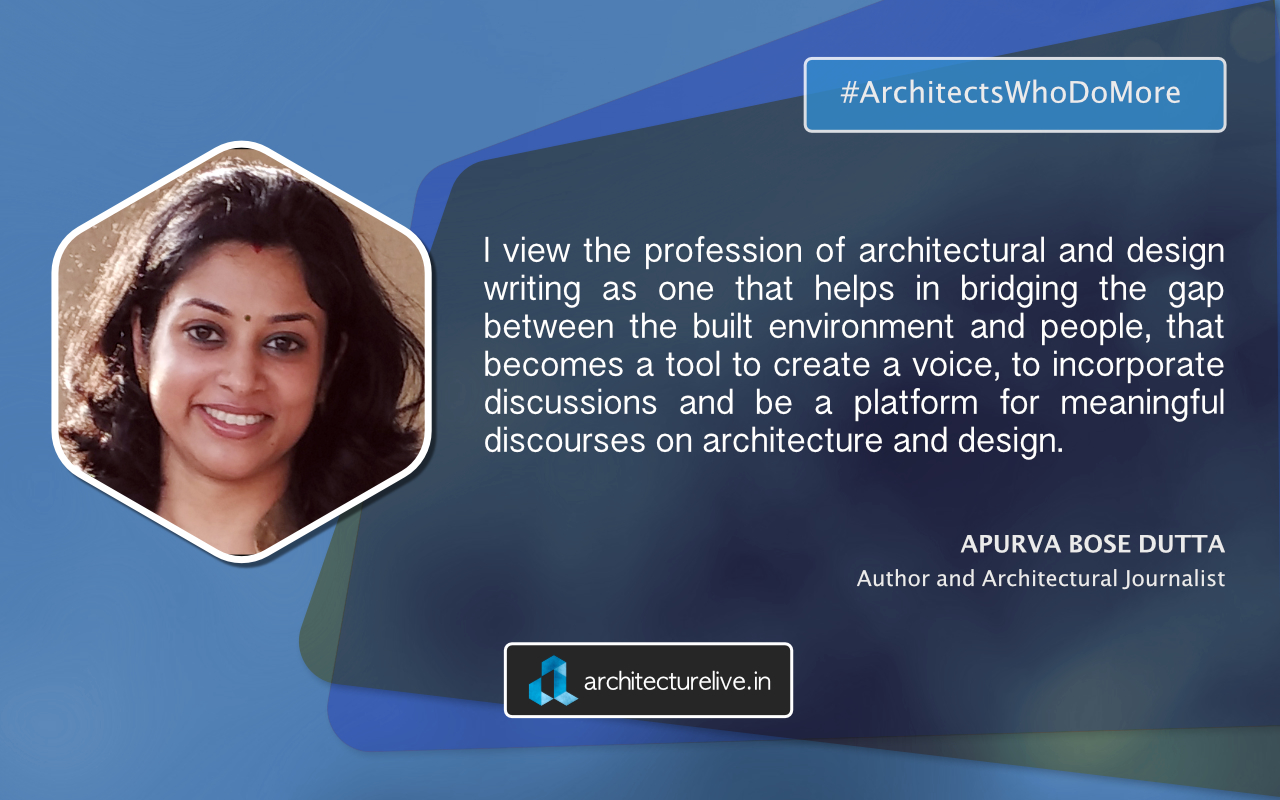
AL: How does your work contribute to the profession and professionals?
Apurva: Considering how collaborative and how interactive our profession is, communications, I believe, should be an essential part of our architectural training. One should be able to express one’s self. Writing is one of the most reliable tool to communicate and reach a broad community. In India, sadly, almost 95% of architects don’t write, either about themselves or about architecture and design. The few people who write about it, aren’t trained in architecture to understand it enough. As a result, architecture and design writing is not an inherent part of our everyday life, which is surprising, because architecture and design don’t only help develop a society, but they get influenced by the society too.
-

Apurva’s book, ARCHITECTURAL VOICES OF INDIA was nationally launched at NATCON 2017 at Bhubaneswar by architects from India, Bangladesh, and Nepal, Dec 2017 -
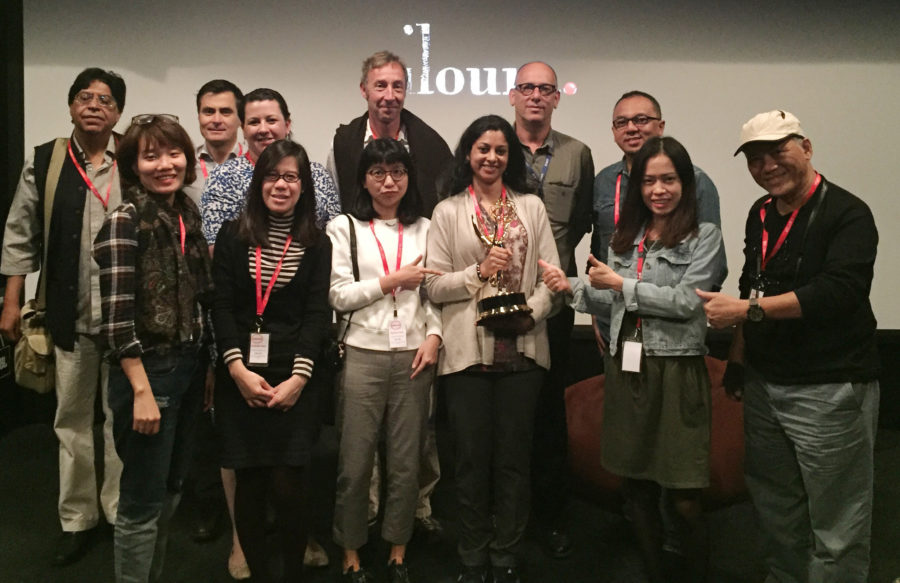
Apurva was invited by the Australian Government to represent the Indian delegation at the International Media Visit of Architectural Writers in Melbourne in Nov 2016 -
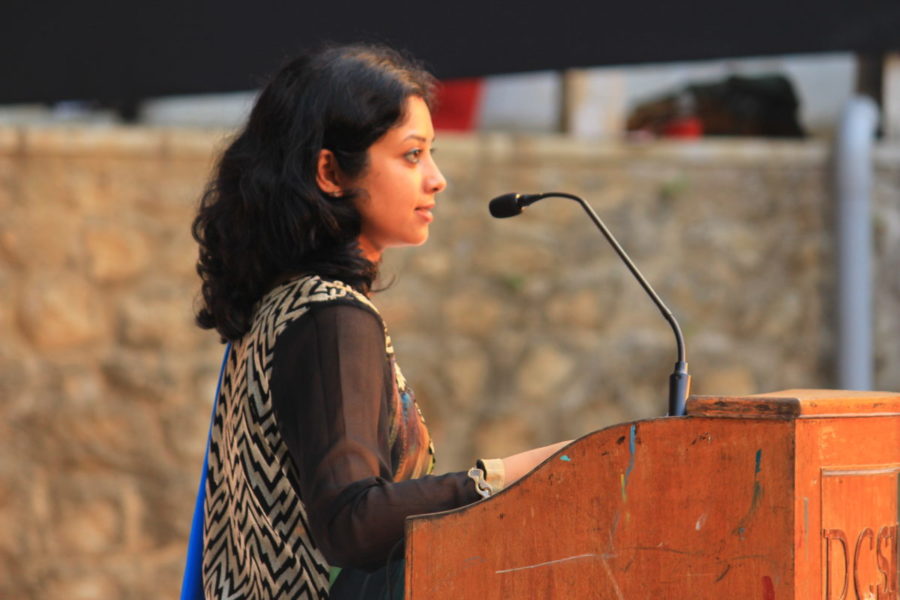
Apurva addressing the students at the NASA Convention at DC School of Architecture and Design in Kerala, Feb 2018 -
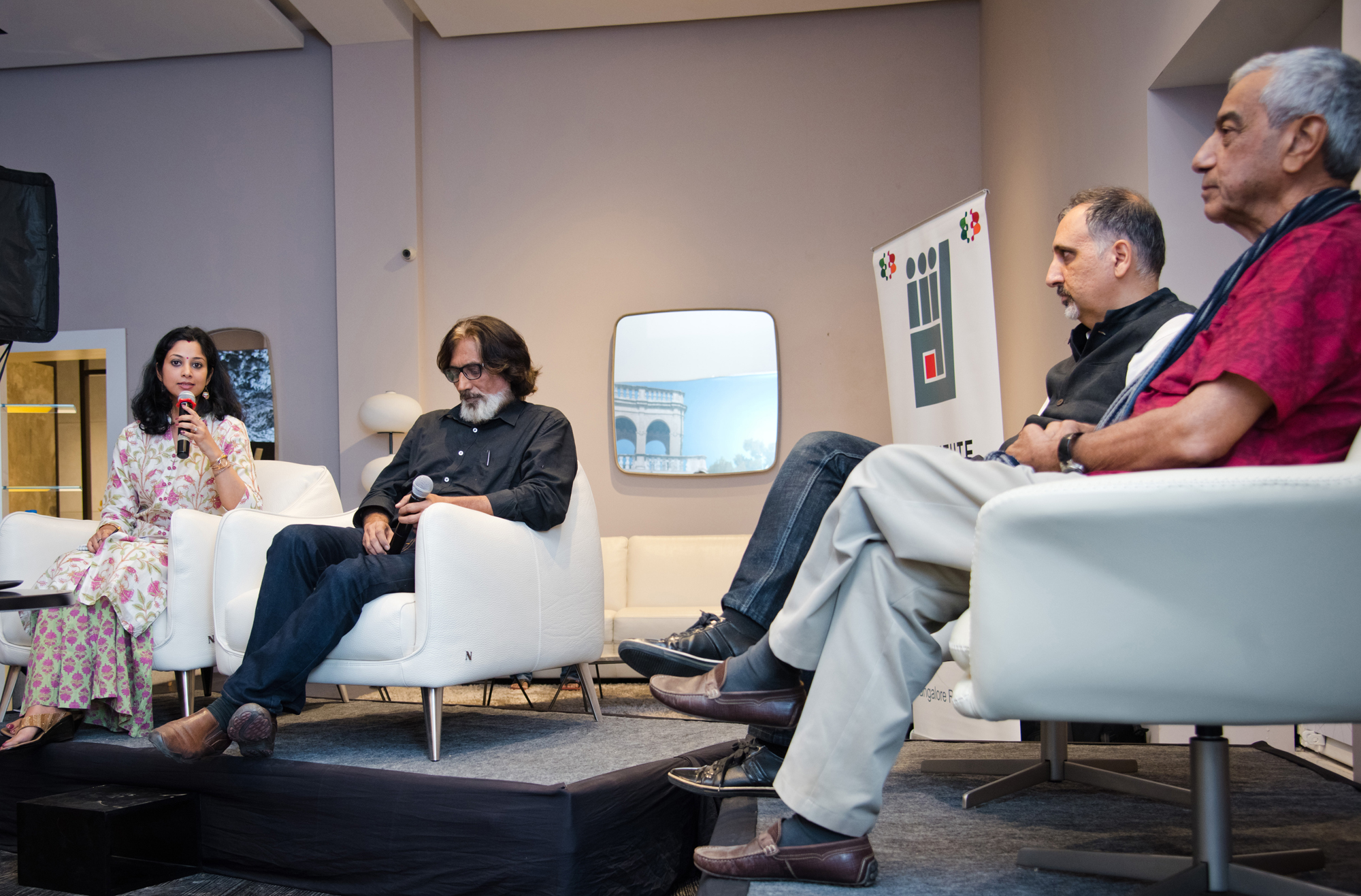
Apurva moderating a panel discussion at “Voices of Design”, a IIID event in Bangalore, May 2018 (Picture Credit: Simply Sofas) -

Apurva as a panellist at the Kerala Literature Festival, Feb 2018 (Picture Credit: DC Kizhakemuri Foundation) -
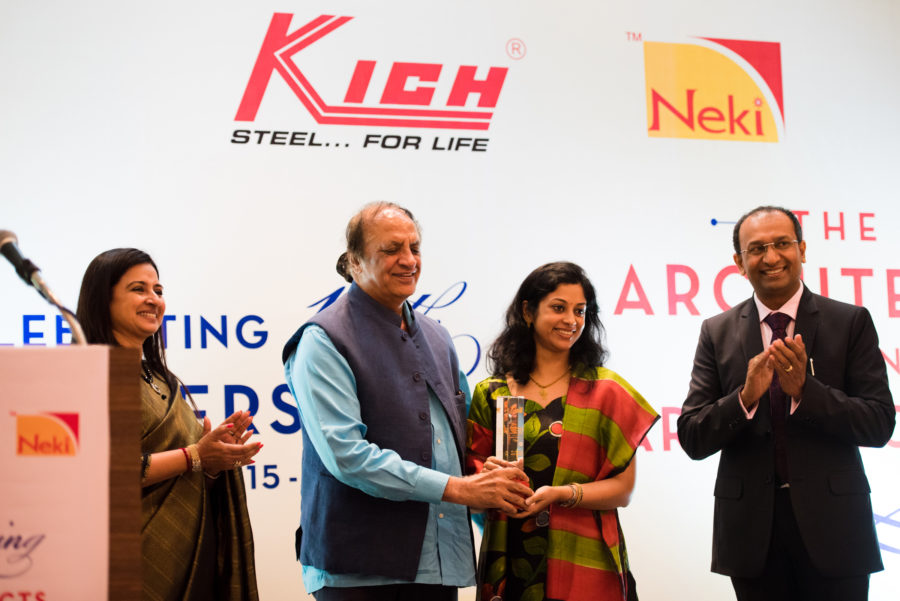
Being awarded for ‘Excellence in Architectural Journalism’ at Mumbai, July 2015
I view the profession of architectural and design writing as one that helps in bridging the gap between the built environment and people, that becomes a tool to create a voice, to incorporate discussions and be a platform for meaningful discourses on architecture and design.
In that sense, my work is a step towards all of that. I am happy today to see so many fresh and established architects turning to this subject as their choice for a career.
AL: What message would you like to give to the younger generation of architects/designers and students, who are looking to take up an alternative career path.
Apurva: As architects we are a breed that form opinions, trigger emotions, create an ambience through the physicality that we give to empty spaces; we are the only profession who visualise environments and think of a world that still has to spring up. That is the core of what we do, and we need to be true to our art.
I also believe that your profession should be your passion, and if it is not, then go and discover your own passion, which can be completely different from what others might have. Finally, have the courage and strength to combat the challenges that come with it. Life gives you different directions to move on, it is up to you how you structure your life path. Remember, if you have dreams, there will always be an ecosystem there to help you to achieve them! So listen to your heart, pursue your dreams, and make your journeys worthwhile.

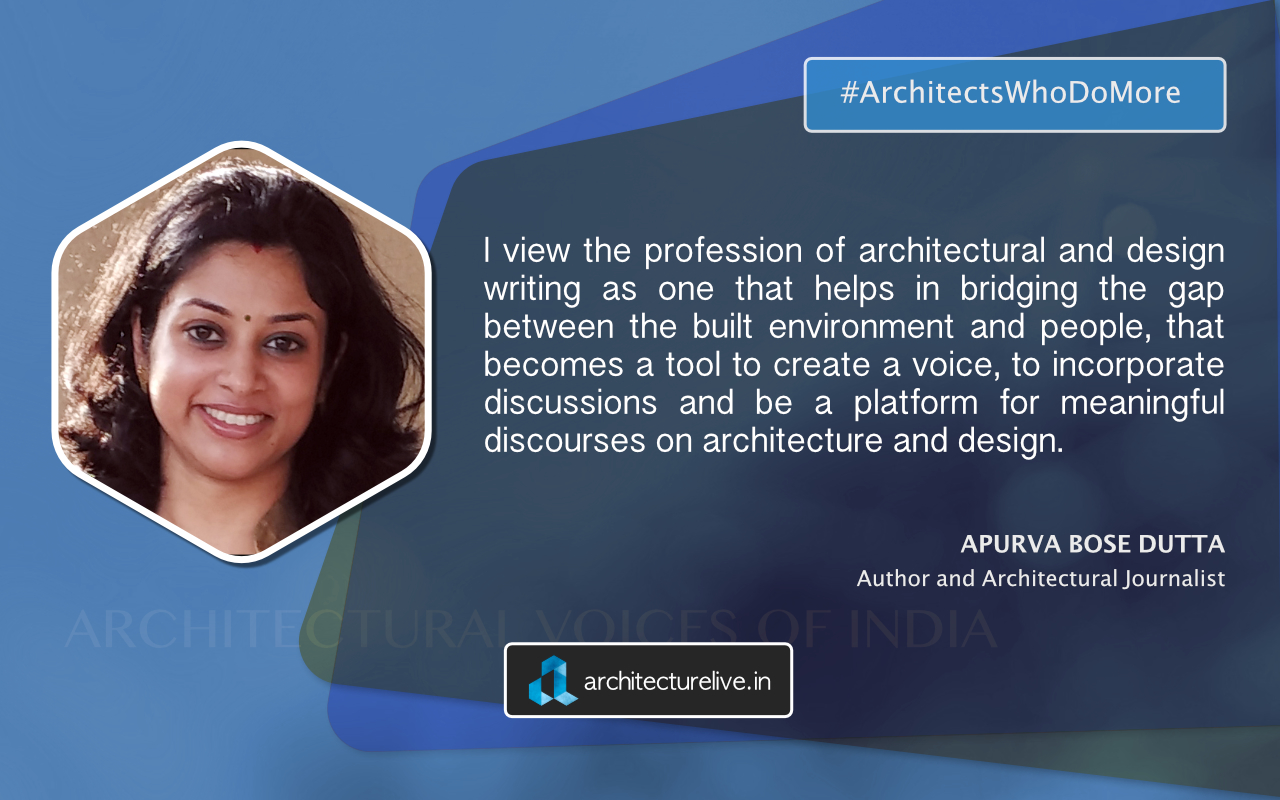







One Response
It’s very easy to find outt any matter on web as compared too textbooks, as I found this piece of writing at this
website.